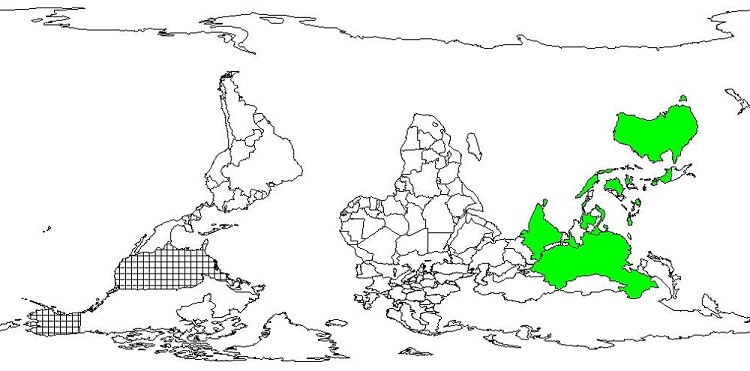Publication
from Agroforestree Database: a tree reference and selection guide
version 4.0
by C. Orwa, A. Mutua, R. Kindt, R. Jamnadass and S. Anthony
Antidesma bunius Sprengel
Local Names: Burmese
(kywe-pyisin), English (currant tree, Chinese laurel, nigger's cord,
salamander tree), Filipino (bignay, bignai), French (antidesme),
Indonesian (hoon, wooni), Javanese (wuni), Malay (buni, berunai), Thai
(ma mao luang), Vietnamese (ch[of]im[of]i), choi
Family: Euphorbiaceae
Botanic
Description
Antidesma bunius may be shrubby, 3-8 m high, or may reach up to 15-30 m. It has wide-spreading branches forming a dense crown.
Leaves
evergreen, alternate, oblong, pointed, 10-22.5 cm long, 5-7.5 cm wide,
dark-green, glossy, leathery, with very short petioles.
Flowers
tiny, odorous, reddish, male and female on separate trees, the male in
axillary or terminal spikes, the female in terminal racemes 7.5-20 cm
long.
Fruits round or ovoid, up to 8 mm across, borne in
grape-like pendent clusters (often paired) and which are extremely
showy because the berries ripen unevenly. Skin thin and tough but
yields an abundance of bright-red juice which leaves a purple stain on
fabrics, while the pulp, only 3 mm thick, is white with colorless
juice. Whole fruits very acid, much like cranberries, when unripe,
sub-acid and slightly sweet when fully ripe. Some tasters detect a
bitter or unpleasant aftertaste, unnoticeable to others.
There is a single, straw-colored, ridged or fluted very hard seed, 3cm long, 6 mm wide.
The
generic name Antidesma is derived from the Greek ‘anti’-against and
‘desma’-a band or constriction, alluding to its use as anti-snake venom
in India.
Biology
A. bunius
is dioecious. In Indonesia, the trees flower in September and October
and the fruits mature in February and March. The fruiting season is
July to September in North Vietnam. In Florida it extends from late
summer through fall and winter because some trees bloom much later than
others.
Ecology
The tree is not
strictly tropical for it has proved to be hardy up to central Florida.
It thrives in Java from sea-level to 1 200 m. It grows well and flowers
but does not set fruit in Israel.
Biophysical
Limits
Altitude: 0-1 200 m
Documented
Species Distribution
Native: Australia, China, India, Indonesia, Myanmar, Philippines, Sri Lanka, Thailand, Vietnam
Exotic: Cuba, Honduras, Israel, Malaysia, Puerto Rico, US

The
map above shows countries where the species has been planted. It does
neither suggest that the species can be planted in every ecological
zone within that country, nor that the species can not be planted in
other countries than those depicted. Since some tree species are
invasive, you need to follow biosafety procedures that apply to your
planting site.
Products
Food: Mostly children eat the
fruits. Indonesians cook the fruits with fish. Elsewhere the fruits
(unripe and ripe together) are made into jam and jelly though the juice
is difficult to jell and pectin must be added. Some cooks add lemon
juice as well. If the extracted bignay juice is kept under
refrigeration for a day or so, there is settling of a somewhat
astringent sediment, which can be discarded, thus improving the flavor.
For several years, the richly colored jelly was produced on a small
commercial scale in southern Florida. The juice makes excellent syrup
and has been successfully fermented into wine and brandy. In Indonesia
and the Philippines, the leaves are eaten raw or stewed with rice. They
are often combined with other vegetables as flavouring.
Poison: The bark contains a
toxic alkaloid. The heavy fragrance of the flowers, especially the
male, is very obnoxious to some individuals.
Medecine: The leaves are sudorific and employed in treating snakebite in Asia.
Services
Reclamation: A. bunius has occasionally been employed in reforestation projects.
Ornamental: The dark green and glossy, alternate leaves make the tree an attractive ornamental.
Tree
Management
The trees
should be spaced 12-14 m apart, each way. One male tree should be
planted for every 10 to 12 females to provide cross-pollination.
Wind-protection is desirable when the trees are young. Otherwise they
require very little cultural attention.
Occasionally, seeds may
be non-viable due to inadequate pollination. Seedlings may turn out to
be male, and female seedlings may not bear for a number of years.
Vegetative propagation is therefore preferred. The tree is readily
multiplied by cuttings, grafting or air-layering. The air-layers have
borne fruit in 3 years after transplanting. Grafting is recommended in
the wet season because scions will remain dormant in dry weather. Most
female trees will bear some fruit without the presence of a male
because many of the flowers are perfect.
Whenever the seeds
are used, they need about 1 month of after-ripening and can then be
sown under shade without pre-treatment. Fresh seeds need pre-treatment
with sulphuric acid for 15 min followed by soaking in water for 24
hours. The viability is about 3-70%.
Germplasm
Management
Depulped and dried fruits of A. bunius
may be stored for 2-5 years in airtight containers without a serious
decrease in seed viability. There are about 2 800 seeds/kg.
Pests and
Diseases
The tree
is attacked by termites in Southeast Asia. In Florida, the leaves may
be heavily attacked by mealybugs and by scale insects and sooty mold
develops on their excretions. Here, also, the foliage is subject to
green scurf and algal leaf spot caused by Cephaleuros tirescens.
Further
Reading
Sosef MSM,
Hong LT, Prawirohatmodjo S. (eds.). 1998. PROSEA 5(3) Timber trees:
lesser known species. Backhuys Publishers, Leiden.
Whitmore TC (ed).
1983. Tree Flora of Malaya: A manual for Foresters. Vol. 2. Forest
Department, Ministry of Primary Industries. Malaysia.
|
|
